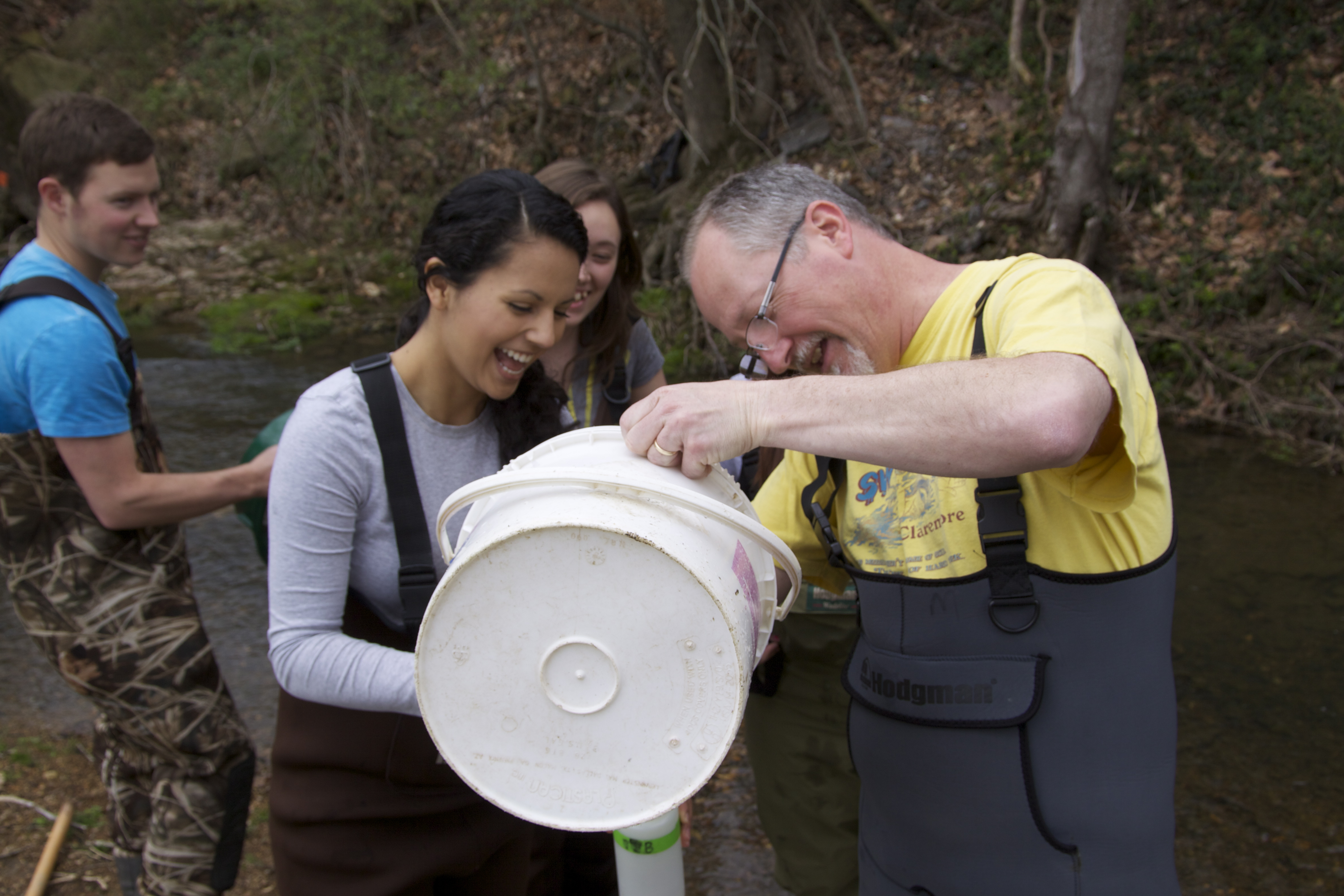Professor Studies Fish in a Shocking Way
By Tracy Balzer
June 6, 2023

A student respectfully leans into the open door of her professor’s office.
“Can you show us where the pancreas is on the cat?”
Such interruptions are not unusual for Biology Professor Tim Wakefield, Ph.D., but cat cadavers are not what capture his imagination. Instead, a substantial research project has engaged his curiosity for the last 15 years — the health of Sager Creek in Siloam Springs.
Siloam Springs is noted for its charm, and the creek that runs through downtown and snakes around the north side of campus is undoubtedly a contributor to the city’s character. However, most folks are unaware of how vulnerable the creek is to “anthropomorphic influence” — the materials washed or blown in from construction and traffic. Wakefield has made it a goal of his research to accurately assess how the creek is affected by such influence.
He and students in his biology research classes have found a way to assess the health of Sager Creek. Their approach seems logical — determine the condition of the creek’s fish, and you’ll gather enough data to determine the overall health of the stream they live in.
Locals are often seen with rod and reel in hand, fishing in the creek for bass and bluegill. These are just a few fish types Wakefield wants; his team is interested in studying all the different fish species living in the creek.
Mechanical means of capturing fish, such as nets, seines and traps, allowed Wakefield’s team to catch several fish species.
“There were some species that were missing from the survey that I knew were in the creek,” Wakefield said.
Wakefield turned to electrofishing using a Smith-Root LR-24 Backpack Electrofisher. This device safely and temporarily stuns the fish in the creek, causing them to float to the surface for collection and examination.
“The electric current is placed in the water by using an anode (positive) and a cathode (negative),” explained Wakefield. “The electric current flows between these two opposite electrodes using ions in the water to carry the current. When a fish is caught between these lines of current, it will be stunned, but usually not enough for it to be harmed.”
When the fish floats to the surface, students place the stunned fish in buckets of water. They then do their analysis – measuring, observing and recording their data before their subjects regain consciousness and are safely returned to the creek.
Why is this research so important? Wakefield uses an event from the recent past to explain.
A significant biological “upset” occurred at the Siloam Springs Wastewater Treatment Plant in September 2015. According to a report from the Arkansas Department of Environmental Quality, a local food production company had a power failure that resulted in the release of untreated wastewater into the Siloam plant. Due to extremely high organic waste levels, the plant could not successfully treat the water. As a result, the plant’s effluent (overflow) became anoxic, causing low oxygen levels that were fatal to over 30,000 fish in a five-mile stretch of Sager Creek.
More data is needed to say how well the fish populations have rebounded since the event. Wakefield’s research will help establish a more precise baseline of fish population data, a critical data set in the event of any future biological events.
“After several semesters of sampling, we should have sufficient data to make a fair comparison,” he said.
Wakefield’s Sager Creek research has resulted in three articles published in an academic journal, with more to come, including an article comparing mechanical fishing techniques to electrofishing.
“Several of my students are interested in careers involving environmental science,” said Wakefield. “Experience in surveying animal species — collecting, identifying, enumerating — will help them secure jobs in the field.”
The research will also equip other communities to pay equal attention to their natural water systems and ensure Sager Creek remains a safe place for families — and fish — to enjoy for years to come.

